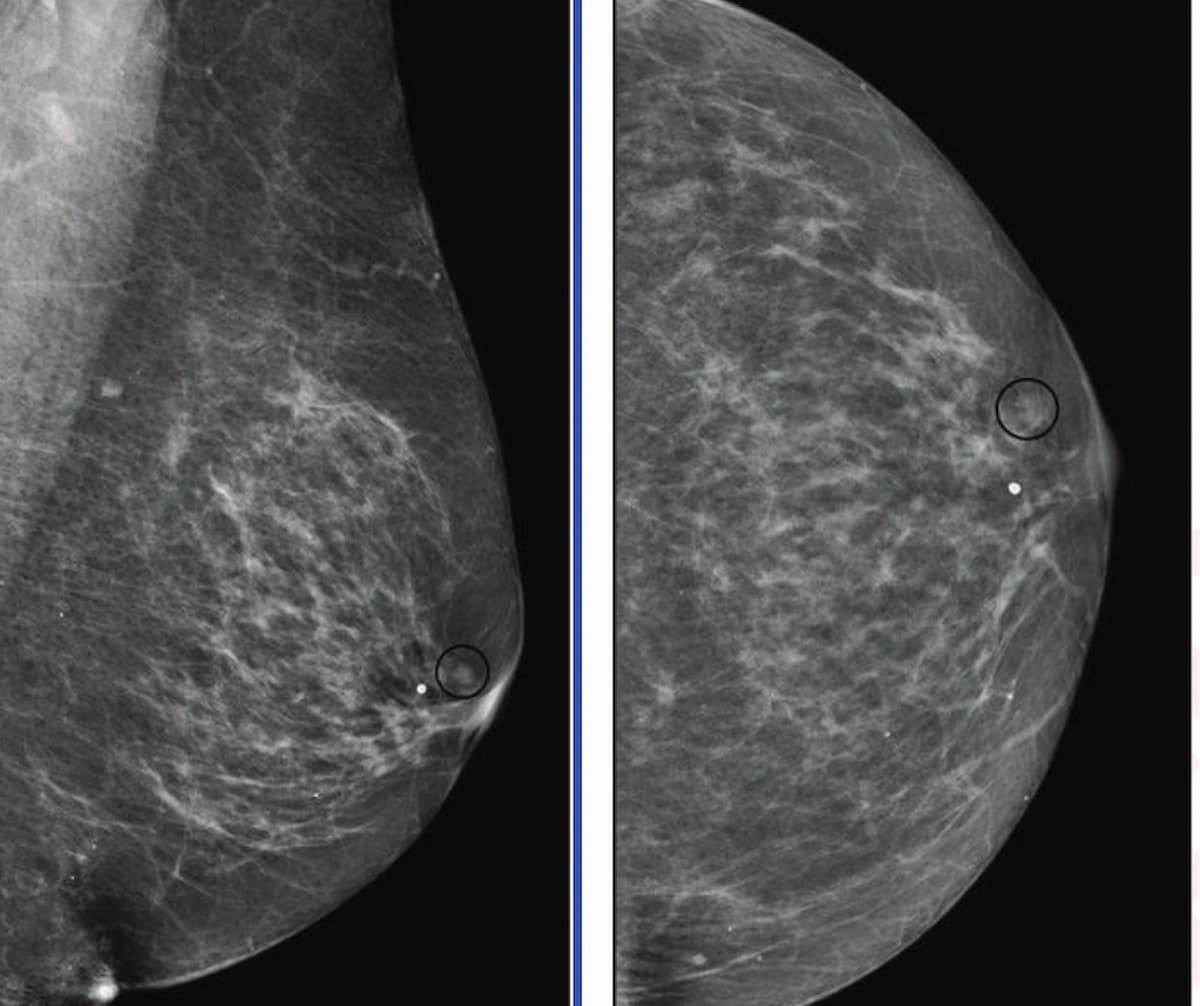Is There More Appropriate Use of BI-RADS Category 3 with DBT than Mammography in Patients with Breast Cancer History?
Recent research involving nearly 15,000 mammography exams in patients with a personal history of breast cancer revealed that digital breast tomosynthesis (DBT) was associated with a lower frequency of BI-RADS category 3 assessment and a lower malignancy rate for BI-RADS 3 lesions in comparison to full-field digital mammography.
For patients with a personal history of breast cancer (PHBC), emerging research suggests the use of digital breast tomosynthesis (DBT) may contribute to more appropriate utilization of category 3 of the Breast Imaging-Reporting and Data System (BI-RADS) in comparison to digital mammography.
For the retrospective study, recently published in the American Journal of Roentgenology, researchers reviewed 14,845 mammograms from 10,118 patients (mean age of 61.8) who had a previous mastectomy and/or lumpectomy. According to the study, there were 8,422 full-field digital mammography (FFDM) exams and 6,423 DBT exams.
The researchers found the malignancy rate for BI-RADS category 3 assessments with FFDM (5 percent) was more than double that of DBT (1.8 percent). They noted that DBT use had a significantly higher malignancy rate for BI-RADS category 4 lesions (32 percent) in comparison to FFDM (23.2 percent). BI-RADS category 3 assessments were also significantly less frequent with DBT (5.6 percent) than FFDM (6.4 percent), according to the study authors.
“These results overall indicate more appropriate use of BI-RADS category 3 assessments in patients with (PHBC) through the use of DBT,” wrote study co-author Catherine Giess, M.D., the deputy chair of the Department of Radiology at Brigham and Women’s Hospital in Boston, and colleagues.
(Editor’s note: For related content, see “Study Looks at Contributing Factors to Incomplete Follow-Up for BI-RADS 3 Findings,” “Can MRI Provide Greater Clarity of Suspected BI-RADS 3 Lesions?” and “Study: Emerging AI Platform for DBT Shows 23 Percent Increase in Breast Cancer Detection Rate.”)
Images courtesy of the American Journal of Roentgenology.

The researchers did note that DBT use was associated with an approximately 10 percent higher frequency for a finding type of mass in comparison to FFDM (33.2 percent vs. 23.1 percent). While acknowledging the potential for a “greater conspicuity of benign-appearing masses on DBT,” the study authors said there was minimal impact on malignancy rate between the two modalities.
“The interpreting radiologist may have recommended follow-up imaging … for these benign-appearing masses due to the concern for second cancers in patients with (PHBC) and an associated abundance of caution. Despite the increased frequency of a finding type of mass for DBT, the malignancy rate for masses was not significantly different between FFM and DBT,” maintained Giess and colleagues.
The study authors also noted that the malignancy rate associated with BI-RADS category 3 assessments was higher with FFDM in comparison to DBT in a variety of subsets within the study cohort including: patients with heterogeneously dense breasts; women between 50 and 59 years of age; those without prior breast imaging exams; and women getting mammograms due to symptoms.
“Special consideration may be warranted when assigning BI-RADS category 3 on FFDM in patients with PHBC with such characteristics, so as to not delay cancer diagnosis,” cautioned Giess and colleagues.
In regard to study limitations, the researchers acknowledged that the retrospective nature of the study and the data coming from one tertiary care cancer center may limit general extrapolation of the study findings. They noted that synthetic mammography was included in a portion of the DBT exams. Giess and colleagues also suggested that possible technical variations due to utilizing different vendors for the FFDM and DBT units may have affected image interpretation in the study.
AI-Initiated Recalls After Screening Mammography Demonstrate Higher PPV for Breast Cancer
March 18th 2025While recalls initiated by one of two reviewing radiologists after screening mammography were nearly 10 percent higher than recalls initiated by an AI software, the AI-initiated recalls had an 85 percent higher positive predictive value for breast cancer, according to a new study.
ECR Mammography Study: Pre-Op CEM Detects 34 Percent More Multifocal Masses than Mammography
February 28th 2025In addition to contrast-enhanced mammography (CEM) demonstrating over a 90 percent detection rate for multifocal masses, researchers found that no significant difference between histological measurements and CEM, according to study findings presented at the European Congress of Radiology.
Study: Mammography AI Leads to 29 Percent Increase in Breast Cancer Detection
February 5th 2025Use of the mammography AI software had a nearly equivalent false positive rate as unassisted radiologist interpretation and resulted in a 44 percent reduction in screen reading workload, according to findings from a randomized controlled trial involving over 105,000 women.